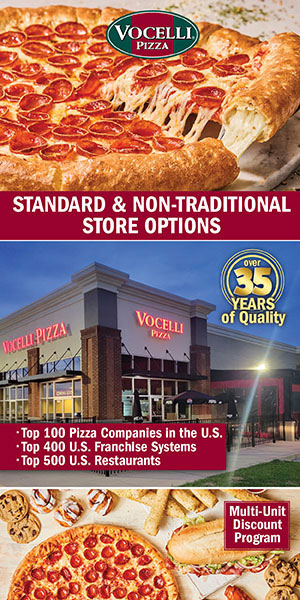5 Lessons from the Military for Improving the Retail Customer Experience

Retailing is a business model challenged by e-tailers and customer expectations that demand an ever-improving customer experience. Despite the pressure from e-tailers, traditional retail still delivers some of the best customer experiences that consumers desire and return to repurchase that same level of high service. Surprisingly, military leadership and military strategy skills can help retailers deliver some of their very best customer-facing experiences. Critical to this success is how can they enhance the in-store and in-person experience.
Improving employees and employee skill sets is the best way to improve the customer experience. The military offers concepts in leadership, planning, and technology that can be easily and rapidly adapted to enhance the effectiveness of front-line business employees charged with delivering the customer experience.
Lesson #1 - Train your team for the challenges of today & tomorrow
Training is a constant for the U.S. Army. The training the Army practices is both formal and informal. Formal training is a professional school, such as learning how to parachute or learning the basic skills of an infantry officer that every soldier regularly attends every 3 to 4 years throughout their career. Informal training ranges from professional reading to lectures to hands-on learning. In the military, most training is hands-on and "do-as-I-do" training that reinforces the ability to perform in times of stress. The themes of training focus on training not only for the challenges of today, but also identifying and training to correct weaknesses in the organization and to identify future challenges. Training for retail teams is critical because it both develops and retains talent and ultimately delivers an improved experience to the customer.
Lesson #2 - Great strategy delivers by creating options for success
Strategy is about finding, determining, and creating options that all reach the same goal or outcome. During my Special Forces training, our instructors loved the "What if this..." happens scenario. What if your primary helicopter for medical evacuation fails to arrive? What if the enemy is twice the estimated size on the objective? To help anticipate and plan for all these possible "What if" events, we had the P-A-C-E planning process. P-A-C-E represents Primary-Alternate-Contingency-Emergency. P-A-C-E is a tool to ensure that you develop a minimum of four ways to ensure steps that are critical to your plan's success being accomplished. In my military experience, we were always taught that "Can't" was never an option. We had to always find a way to accomplish the mission. P-A-C-E is a great tool for retail teams to help drive creativity in any process that affects the customer experience to find alternate and still effective methods to meet the customer's expectation.
Lesson #3 - Develop retail leaders who lead by example in all actions
The military places incredible emphasis on the concept of leadership by example. Leadership by example is that the leader personally sets the example in job performance and professionalism both large and small of what to do and how to do it. In the Army, the most senior leader always eats last - no matter what. In the leadership by example principle, a leader always ensures that every person is taken care of before they are. Central to leadership by example is the concept of the leader as a mentor and a coach. A coach is the best concept for military leadership development because a coach is first concerned dually with the player and the performance of the team. Retail leaders who sweep the floors, help stock the shelves, or deal with an angry customer themselves display not only leadership by example, they also serve as examples their employees will emulate.
Lesson #4 - Train employees with high skills and promote initiatives to deliver world-class customer experience
Few people realize that the June 6, 1944 D-Day invasion hung in the balance during those first few critical hours. On the beaches, troops landed under deadly enemy fire, leaders were killed, and the airborne soldiers dropped the night before were scattered and unorganized. How then, less than 12 hours later, was success achieved? Two factors explained the success: 1) high levels of training, and 2) the concept of initiative. American soldiers were relentlessly trained in both their own combat tasks and also in their leaders' combat tasks. All soldiers were expected to know their job and the jobs of the soldiers next to them. Soldiers learned the tasks in classrooms, then perfected the tasks on training beaches, at night, in the rain, and in the snow so that no matter the conditions the tasks were performed correctly. The concept of initiative fit into the plan because soldiers were expected to achieve success even when the plan failed. Every soldier, down to the newest private, knew what a successful outcome of the mission was. Therefore, when the plan needed to be adapted, everyone was expected to take the initiative to adapt their actions to make the mission a success. Train retail employees for not only their jobs, but other jobs as well. Furthermore, retail training needs to emphasize the importance of initiative so employees know they are expected to adapt their actions to meet the needs of the customers.
Lesson #5 - Teach your teams to improve themselves
The military uses the After Action Review (AAR) to review and learn from every activity. The purpose of the AAR is to help a team understand what happened, what worked, what did not work, and then to formulate an improvement plan, as a team, to be better the next day. In retail, an AAR can be as simple as gathering everyone together at the end of a shift for 15 minutes to understand one or two challenges from the day, what went well in meeting those challenges, and what needs to be done differently the next time to address the challenge. Furthermore, the use of AARs creates employees who view problem resolution as their responsibility. Employees see themselves as the solution to their problems.
In conclusion
Retailing and working directly with customers is a rewarding experience. Understanding how you can coach and develop your business team to be more effective, more customer-focused, and produce better leaders for the organization results when you combine military strategy and leadership techniques focused on improving the customer experience.
Chad Storlie is an adjunct professor of marketing at the University of Minnesota Carlson School of Management and a mid-level marketing executive. He is a retired Lieutenant Colonel in the U.S. Army Special Forces (Green Berets), an Iraq combat veteran, and a widely published author. Contact him at [email protected] or 402-960-1350.
Share this Feature
Recommended Reading:
| ADVERTISE | SPONSORED CONTENT |
FRANCHISE TOPICS
- Multi-Unit Franchising
- Get Started in Franchising
- Franchise Growth
- Franchise Operations
- Open New Units
- Franchise Leadership
- Franchise Marketing
- Technology
- Franchise Law
- Franchise Awards
- Franchise Rankings
- Franchise Trends
- Franchise Development
- Featured Franchise Stories
| ADVERTISE | SPONSORED CONTENT |








 The franchise listed above are not related to or endorsed by Franchise Update or Franchise Update Media Group. We are not engaged in, supporting, or endorsing any specific franchise, business opportunity, company or individual. No statement in this site is to be construed as a recommendation. We encourage prospective franchise buyers to perform extensive due diligence when considering a franchise opportunity.
The franchise listed above are not related to or endorsed by Franchise Update or Franchise Update Media Group. We are not engaged in, supporting, or endorsing any specific franchise, business opportunity, company or individual. No statement in this site is to be construed as a recommendation. We encourage prospective franchise buyers to perform extensive due diligence when considering a franchise opportunity.